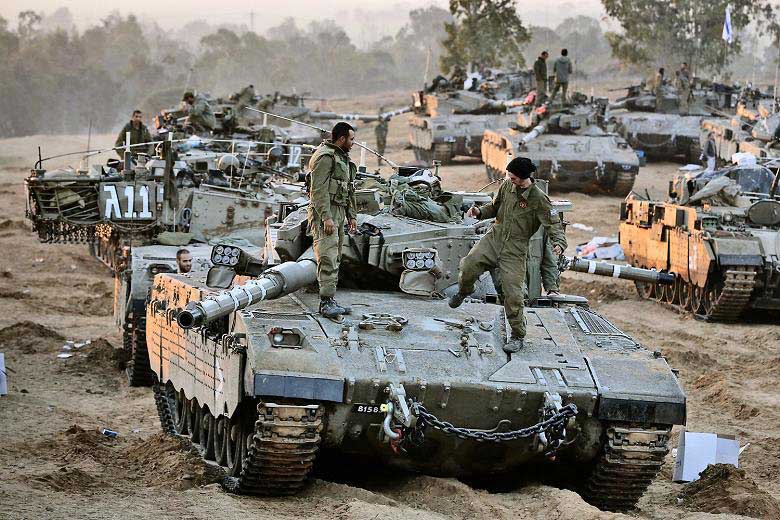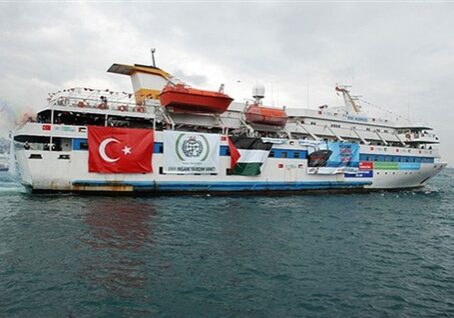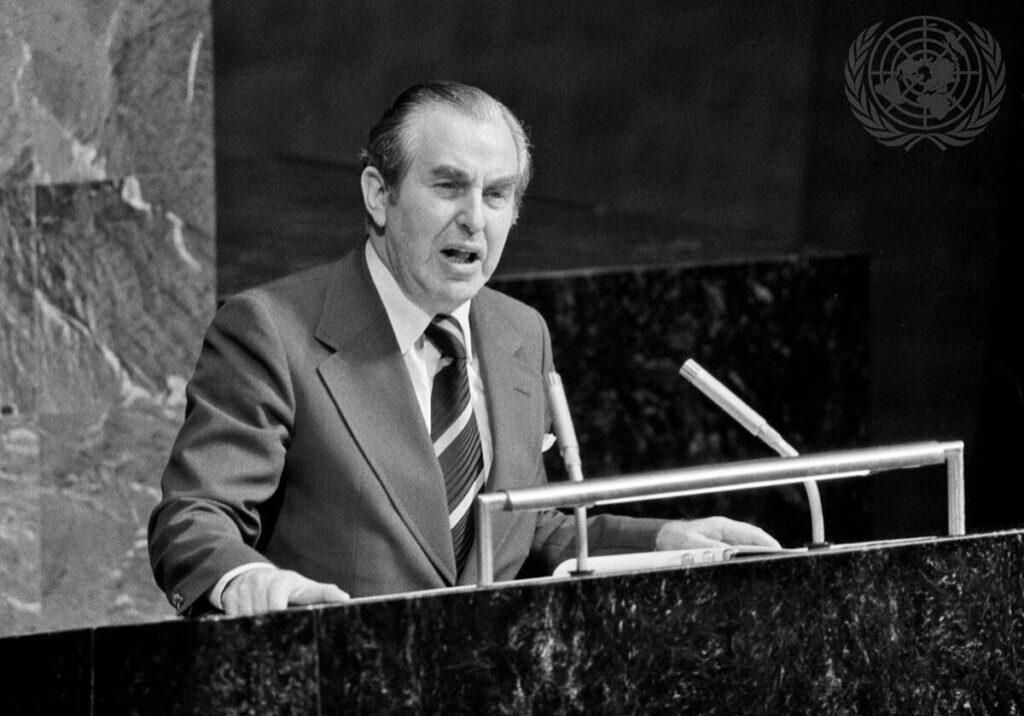Australia/Israel Review
Gaza War – Again
Jul 28, 2014 | Amotz Asa-El

Amotz Asa-El
Escalation was quick. What began with the abduction on June 12 of three Jewish teenagers, and the discovery of their bodies on June 30, resulted in the arrests of Hamas activists throughout the West Bank and intensified rocket barrages from Gaza on Israel – while Jewish extremists kidnapped and murdered a Palestinian boy on July 1, thus unleashing riots in east Jerusalem.
Following the launch of more than 80 rockets into Israeli towns in one day, on July 7, the IDF launched Operation Protective Edge, unleashing the air force on Gaza’s rocket launchers while fending off with the Iron Dome interception system the rockets that continued to target Israel.
The interception effort has been a success, as hundreds of rockets fired at cities ranging from Beersheva in the south to Ashkelon, Ashdod and Tel Aviv on the coast, generally failed to kill people or damage large buildings. There has been considerable damage to apartment buildings in the south, and two weeks into the fighting three Israeli civilians had been killed.
Then again, this feat has come at great effort, and the disruption to Israeli routine has been considerable. Sirens have sounded throughout the country day after day, sending millions to so-called “safe areas,” the specially built bomb-proof rooms that are part of Israel’s construction standard.
Meanwhile, faced with the rockets’ failure, Hamas launched a series of ground raids that also failed. These included a Hamas naval commando squadron which emerged from the Mediterranean off the northern Gaza Strip only to be spotted and killed on the beach. Before that, an attempt to detonate an explosives-filled tunnel that led into Israel from the southern Strip was discovered and neutralised.
On July 16 before dawn, IDF troops detected 13 Palestinian infiltrators who had emerged from a tunnel within Israel proper. The troops opened fire and the Palestinians fled back into the tunnel which was soon detonated by an IDF aircraft. Hamas’ broad intention, it soon became clear, has been to use the tunnels, which cost millions and took years to build, in order to emerge within several kibbutzim simultaneously where they would spray hundreds with bullets and take hostages, for whom they had prepared anaesthetic injections.
Other attempted tunnel attacks followed, including a major infiltration near Sderot on July 21, foiled by the IDF.
It thus became clear that the tunnels are a major strategic threat that must be dealt with no less urgently than the rockets. Coupled with diplomatic developments that had transpired until then, the government decided to do what it had avoided during 10 days of intensive fighting: invade the Gaza Strip with ground troops.
The diplomatic effort to conclude the fighting seemed to ripen on July 15, when Egypt offered the parties to accept a ceasefire and then come to Cairo to discuss its terms, through Egyptian mediators. Israel accepted this offer but Hamas rejected it, citing the “insult” that Egypt did not consult it in advance.
It was a typically Middle Eastern twist of events whose repercussions could not be more paradoxical. In the previous bout between Israel and Hamas, in late 2012, Israel faced an Islamist government in Cairo that openly identified with Hamas. Uncomfortable as that was, it nonetheless proved useful in terms of bringing Hamas to the table and also making it accept a deal.
Now, with Egypt’s Islamists succeeded by President Abdul Fatah al-Sisi who is hostile to Hamas due to its affiliation with his Islamist nemesis, the most natural mediator with Hamas lacks its predecessor’s leverage in Gaza. Another potential mediator, Turkey, had altogether disqualified itself after Prime Minister Recep Erdogan attacked ad-hominem President Sisi, who he said was a despotic usurper, while adding that Israel’s military actions were “worse than Hitler’s”, a statement which Prime Minister Netanyahu attacked as “flagrantly antisemitic and desecrating the Holocaust’s memory.”
The bottom line of these dynamics has been that as the fighting approached its third week there was no effective mediation between Hamas and Israel. At that point, after having accepted the ceasefire offer that Hamas had rejected, as well as others by the UN and Palestinian President Mahmoud Abbas, Israel decided to send the IDF into the Gaza Strip. It was a tough decision, considering Gaza’s densely urban terrain, and Hamas’ policy of fighting from within population centres and avoiding wearing uniforms – both choices in violation of international law.
Led by the Golani infantry brigade and backed by heavy artillery, the ground troops’ mission has been to find and destroy the infiltration tunnels. By the invasion’s second day the army said it had destroyed 14 such tunnels. Defence Minister Moshe Ya’alon said he expected the tunnels’ critical mass to be destroyed within “two-to-three days.”
At the same time, there was considerable bloodshed.
The IDF’s warnings, by TV, radio, email, leaflets, cell-phone texting, and dropping blanks before bombing specific buildings and areas – triggered a mass-flight southward, but many stayed put heeding Hamas’ express orders to ignore the IDF’s warnings. Taking stock of this strategy, Netanyahu asserted that whereas Israel was using its missiles to protect its population, Hamas was using its population to protect its missiles.
As the operation entered its 17th day there were, according to Gaza emergency services spokesman Ashraf al-Qudra, 655 Palestinian fatalities, a majority of them since the launch of the ground operation. While it is clear that many of the dead were innocent civilians including children, their actual number remains unclear. Besides the fact that Hamas troops generally fight in civilian clothes, many civilians reportedly allowed missiles to be launched from their homes.
The IDF, at the same time, lost 32 troops and officers by the end of the ground invasion’s fifth day. Most were killed in the assault of the Shajaiya neighbourhood in the northern Strip, where much of the tunnel activity had centred. As the battle fog gathered, Western governments, from US President Obama to German Chancellor Angela Merkel, backed Israel’s actions publicly and unequivocally, saying any country that comes under rocket attacks has the right to defend itself. Obama, however, did express his concern over civilian casualties, while the UN Security Council was preparing to discuss the violence.
As of this writing, the fighting’s diplomatic aftermath has yet to unfold, but several regional, political, and military conclusions can already be drawn.
The first conclusion is that Hamas has established itself as an international troublemaker. In a world threatened by Islamist fanatics from Nigeria through Iraq to Afghanistan, Hamas is now seen as part of a fundamentalist international that threatens global stability, including by much of the Arab world.
At the same time, the Islamist group failed to appreciate the efficiency of Israel’s Iron Dome system. Had it been up to Hamas, the rockets Israel intercepted would have hit skyscrapers in Tel Aviv and apartment buildings in Ashdod, leaving many casualties strewn in the streets.
These miscalculations follows Hamas’ other strategic setbacks in recent years, beginning with its loss of Syria’s backing, after having bet on Assad’s defeat; then its loss of Iran and Hezbollah as allies, due to their Syrian loyalty, and with them Teheran’s financial infusions; and finally, Hamas lost Egypt due to the defeat there of the Muslim Brotherhood, and with it also the backing of Saudi Arabia. Now Hamas’ only strategic allies are Qatar and Turkey, which has earned almost everyone’s suspicion in the Middle East, from Teheran to Jerusalem and from Cairo to Beirut.
Yet most importantly, Hamas failed to understand the Israeli psyche. A key goal of Hamas’ escalation has apparently been to create a new financial sponsor to pay the salaries of its 42,000 employees – replacing the Iranians and the Hamas smuggling empire closed by the Egyptians. The unity deal with the PA, signed in April, was also intended to get them paid, but Fatah was unsurprisingly unwilling to become the paymaster for Hamas, an organisation dedicated to Fatah’s overthrow no less than Israel’s. The thought that an attack on Israel would somehow create such a pipeline of funds is unrealistic.
On the contrary, in lobbing rockets at the Negev and the coast and in digging tunnels under kibbutzim Hamas has convinced the mainstream Israeli public that it is an implacable enemy that must be fought. The best indication of this consensus has been the conduct of the main opposition party, Labor, which has unambiguously backed Binyamin Netanyahu’s every move since this latest round of violence erupted.
Netanyahu, in fact, emerges from the crisis strengthened, and wielding a kind of public legitimacy he had never enjoyed during his previous eight years as prime minister.
Having initially held his fire, even while the country was under continuous rocketing, Netanyahu earned kudos in the media, even from pundits who are distant from his politics and who over the years have attacked him habitually. While he gave diplomacy a chance, Netanyahu fired then-deputy defence minister Danny Danon, who attacked him on radio, demanding Hamas’ destruction.
This was Netanyahu’s way to tell all those to his right, especially Foreign Minister Avigdor Liberman and Economics Minister Naphtali Bennett, to reserve their misgivings about the way he is conducting the war on Hamas to private and closed forums. Prior to that, Liberman had said Gaza would have to be conquered and Hamas’ rule dismantled. Since Danon’s dismissal, Liberman has said little publicly, and all Netanyahu’s coalition partners fell in line and seem to be calculating their words with new caution.
Just what Netanyahu thinks Hamas’ future should be remains unclear. According to one thesis, he actually prefers that it survive, because no obvious alternative exists for Gaza. According to another thesis, the current skirmish leaves Netanyahu no choice but to seek Hamas’ defeat and dismantlement.
For his part, Netanyahu said at the end of the invasion’s first day that Abbas can be “part of the solution,” while Defence Minister Ya’alon said, in reply to a question about Hamas’ future, that not all problems can be solved “with a bang.” Both repeatedly said that the struggle against Hamas will be protracted, and lowered expectations from the operation’s results, saying only they sought “to restore quiet.”
Even so, in the context of the past decade, the current confrontation already seems pivotal no matter what its duration and aftermath.
After having fired – or encouraged other groups to fire – some 11,000 rockets at Israel between 2005 and this June, Hamas has apparently overplayed its hand. When it is through celebrating the current skirmish as a victory, as it likely will in public rallies once it ends, Hamas will find its archenemy, PA President Mahmoud Abbas, with a renewed foothold in the Strip, while Egypt makes no secret of its hostility. Iranian arms shipments and monetary infusions will be limited as Egypt no longer tolerates smuggling. It may well be, therefore, that 2014 will be recalled as the year when Hamas’ seven good years in Gaza came to their end.
Tags: Israel






